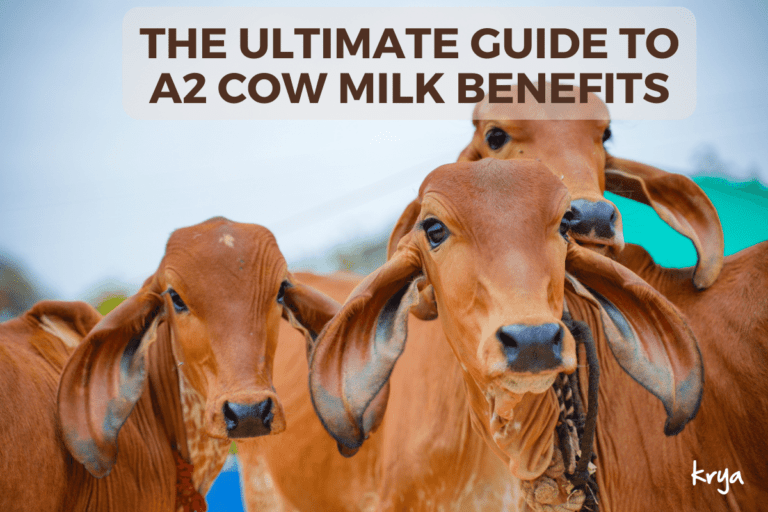
This post was last updated on August 25, 2023 by srinivas krishnaswamy Ritucharya (seasonal guidelines for good health ) and Dinacharya (daily living guidelines) are two cornerstones of health as per Ayurveda. The Indian knowledge systems have divided the year into six different seasons of two months each. Due to the movement of the Sun through the year, the different parts of Earth experience the different seasons ( also called Ritu) In each season or Ritu, the environmental factors impact our bodies in different ways. Therefore for each season Ayurvedic acharyas have given us clear guidelines that cover daily regimen, food and drink, exercise, Abhyanga, clothing, places to go to or avoid , gems , flowers, fragrances & accessories that can be used etc. By following these Ritucharya rules, we can prevent diseases due to seasonal weather changes and maintain good health through the year. Many lifestyle disorders can be controlled with sincere implementation of Dinacharya and Ritucharya guidelines. For example, did you know our bodies are at their weakest during the hot summer (greeshma ritu) season ? Therefore we should avoid vigorous exercise during this seaoson and beginners should avoid starting a new exercise routine during summers Why is Ayurvedic Ritucharya so important? Why does following seasonal guidelines help improve our health and sense of well being? In this guide, we will also the answers. We will also share the detailed instructions for each season , based on Authentic Ayurvedic references. Adana Kala vs Visarga Kala: An Ayurvedic concept: Depending upon the movement of the Sun, the Ayurvedic Acharyas have divided the year into 2 parts of 6 months each. Each of these 6 month periods have 3 seasons of 2 months each. Hence we experience 6 seasons according to Ayurevda: each lasting 2 months. 3 seasons fall […]

This post was last updated on December 7, 2022 by Preethi Sukumaran What are the benefits of Kumkumadi tailam ? What are some of the ingredients used in this classical Ayurvedic formulation? how to use kumkumadi oil? Could there be any side effects if we use the product on the wrong skin type? These are some of the questions we have attempted to answer in this authoritative guide that helps you decode the many many benefits of kumkumadi tailam. This post aims to give you authentic information to help you understand if this is the right ayurvedic skin serum for you, and how to craft a good skin care routne with this product. This blog post has been written to answer the questions asked commonly by Krya’s customers – we seek to demystify and explain the big picture behind Kumkumadi tailam. This post will explain the history behind this formulation, the dravyas that go into it, who it suits, and what conditions it is not suitable for. It will end with a brief piece on 2 of the new Krya facial oil serums which are excellent options to consider when you seek an ayurvedic facial oil / ayurvedic facial serum. What is Kumkumadi Tailam? Who formulated it and for what condition? Kumkumadi tailam is an ancient, classical ayurvedic skin oil formulation that is now gaining popularity among many companies which promote luxurious Ayurveda. This formulation is being marketed as an ultimate, all-purpose Ayurvedic skin oil to solve ALL skin problems. Costs of this product are also going through the roof, with some companies selling 12 ml for close to Rs.2500 (around 2 lakh rupees per liter!) This post aims to cut through this hype and educate about the real benefits of Kumkumadi tailam and who should be using it. Read […]

This post was last updated on April 10, 2023 by Preethi Sukumaran Cow’s milk is an important food in Ayurveda. Regular intake is said to improve ojas, tejas, build good dhatu and positively impacts physical and mental health and nutrient availability in the body. However today we get many varieties of cow’s milk. Are these all the same? What are the a2 cow milk benefits for us? In this article we analyze milks from an ayurvedic perspective . What Milk is widely available in India today? The predominant, widely available milk in India is processed, homogenized, pasteurized milk sourced from large cooperatives and conglomerates. They follow a collection + aggregation model. Here Milk is sourced from small dairy farmers with any breed of cow or buffalo, mixed together, homogenized to follow government standards of fat percentage and then sold as toned milk, full fat milk, etc. Which in turn use a mixture of own milk and aggregated milk. This is the case for all major cooperative dairy conglomerates across India. Problems with Commercial Mixed / A1 Milk type • Milk is sourced from different kinds of daily cattle and mixed together: so we have desi (A2), foreign (jersey – A1), hybrid (desi+jersey), buffalo, and sometimes goats milk being mixed together. The properties of each of these are different and will have a different effect on the body. Depending upon the mixture we get, the body may accept it better or it may not. • As Dairy farmers are rewarded for fat percentage of Milk (higher cost paid for higher milk fat), they are incentivized to replace lean indigenous breeds with foreign breeds which are naturally high in fat. Again to conserve milk fat, they restrict the animal’s movement and can feed the Animal high fat and unsuitable diet in order to extract high fat […]
This post was last updated on March 6, 2024 by Preethi Sukumaran The abhyanga is a powerful Dinacharya that gives us good health and well being. When done regularly it helps improve strength, balance aggravated doshas and also improves skin health and hair health. However, as we have seen, Ayurveda also advises following Ritucharya practices. These are changes / modifications to food habits and daily practices in each season. In today’s post we will look at the abhyanga modification to be done for Spring (Vasanta Ritu). In our earlier post on Vasanta Ritucharya, we have covered why a change in habits is required in this season. In Spring (Vasanta Ritu), just like ice melts in the Mountain tops due to the presence of the sun, the Sun’s movement helps melt accumulated Kapha in our bodies too. As this Kapha beings to circulate in the body, we experience a surfeit of mucous related issues like colds, runny noses, hay fever, etc. Particularly if we did not follow the Ritucharya rule in Winter about putting accumulated Kapha to work through intensive exercise, we will have to deal with aggravated Kapha in spring. The presence of this liquid Kapha in the body creates a few challenges to the practice of abhyanga in spring. As there is more Kapha circulating in the body, there is a resistance to oil absorption. Also, as Kapha tends to increase heaviness and stiffness in the body, we must be VERY careful during Abhyanga NOT to contribute further to this feeling of “gurutva” or heaviness and stiffness in the body. Abhyanga Contraindications : Before we get into the post on the abhyanga modification to be done in spring, here are some basic precautions to follow while attempting this Dinacharya. Do NOT do Abhyanga is you are pregnant or are […]

This post was last updated on August 9, 2022 by Preethi Sukumaran A common question we get asked at Krya is about healthy eating timings & habits to follow and meal choices at each time. Today, the media is charged with advice on nutrition and the importance of developing healthy eating habits. Often, these so-called studies also become quite contradictory, and we naturally start looking for some genuine and time tested guidance on on ahara (food) and ahara niyama (dietary practices to observe). A key part of ahara niyama (or healthy eating habits) in Ayurveda is to identify the proper/healthy time to eat. This influences our capacity to digest food and extract nutrients from the food. In fact, choosing the correct time to eat each meal has the same effect on our health as choosing what to eat. In other words, we should spend the same amount of time planning when to eat as planning what to eat. In this post, we are going to see why Ayurveda pays so much attention to meal timing and how this is a key part of developing healthy eating habits. Planning healthy eating schedule: Different doshas influence different dayparts Ayurveda tells us that each day is divided into 4-hour dayparts. Each of these dayparts is connected to the slow rise, peaking, and then falling of a particular dosha in our body. The strength of the surge in the dosha depends upon the movement of the Sun. For example, if there is sunshine during the kapha period, the effect of kapha will be slightly reduced. Similarly, if there is good sunshine, say during a pitta part of the day, pitta will be much more aggravated due to the influence of the Sun. In order to take advantage of these natural surges in a particular […]
This post was last updated on August 19, 2021 by Preethi Sukumaran The Abhyanga is a key Dinacharya, daily practice recommended in Ayurveda to impart Bala (strength), Ayush (health and Immunity) and Ayu (long life) to the body. This practice forms an important part of Krya’s recommendations to improve hair growth, impart better strength and texture to hair and to also improve the quality, tone and texture of skin. An abhyanga is also a very important Dincharya that is recommended for specific cases of hairfall like post partum hairfall, hairfall due to sudden and extreme weight loss (cases of high vata aggravation). Many Krya consumers have found a HUGE difference to their hair health, skin texture and overall well being and immunity when abhyanga is added to their daily routine. The practice of abhyanga is mentioned as a health giving practice in all the Ayurvedic Samhitas. In today’s post, we will analyse the abhyanga shloka in Ashtanga Hridayam’s Dinacharya chapter and see why Acharya Vagbhatta says this is such an important and useful practice. Ashtanga Hridayam: part of the Brhat Trayee Texts in Ayurveda We have written often about how empowering Ayurveda is as a Vaidya shastra. Ayurveda is considered an UpaVeda, an offshoot of the vedas themselves and is found in the Atharva Veda. This Upa Veda is a Divine Science which has been handed down from the Devas to the Raja Rishis. It was then passed down in oral tradition until it was compiled about 3000 – 4000 years ago by Agnivesa. Agnivesa’s Samhita, was then further redacted by Charaka. Charaka’s redaction of Agnivesa Samhita became much more famous than the original, and soon everyone began to refer to Charaka’s redaction as the Charaka Samhita. Charaka Samhita forms the first of the Brhita Trayee. The second text in […]





